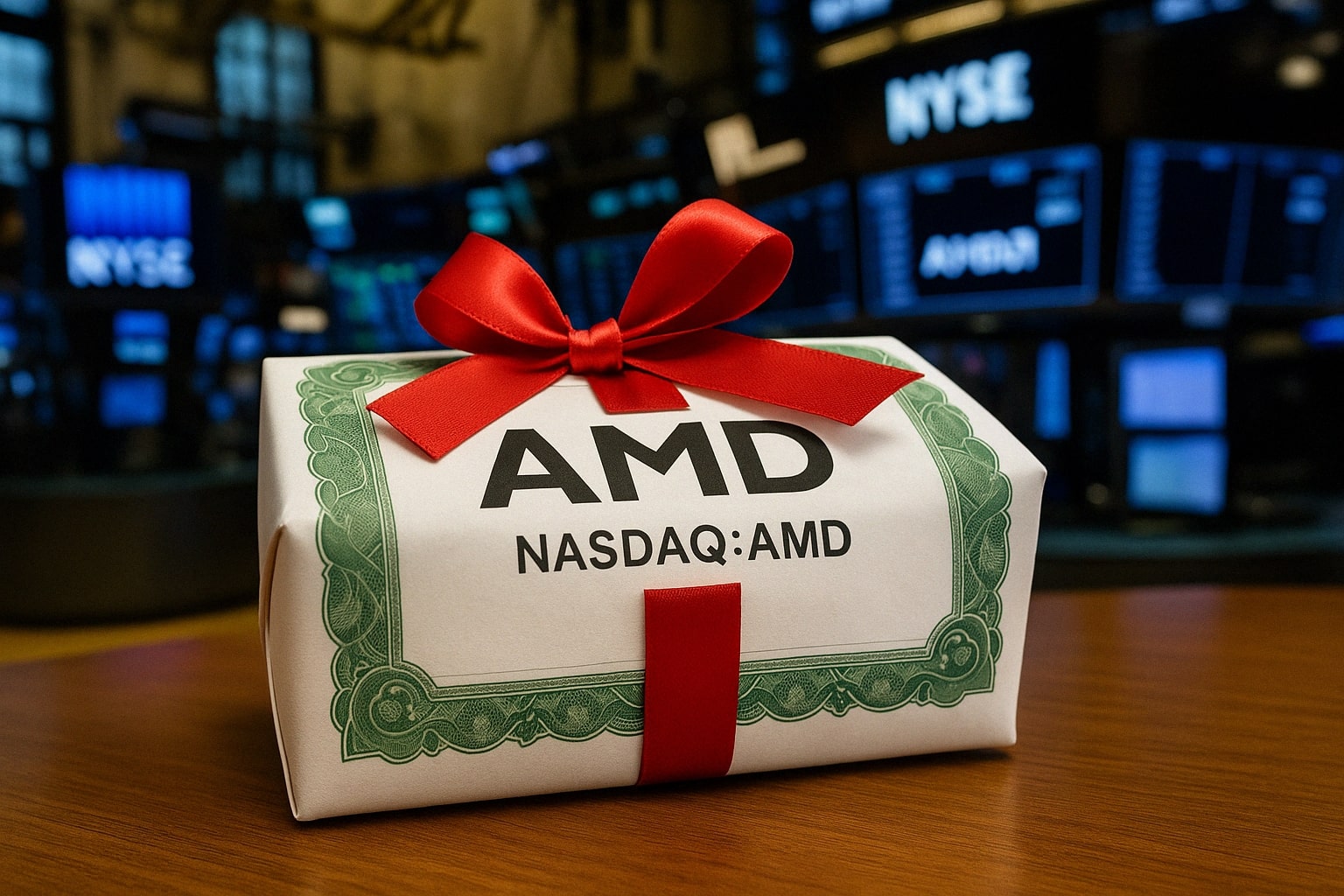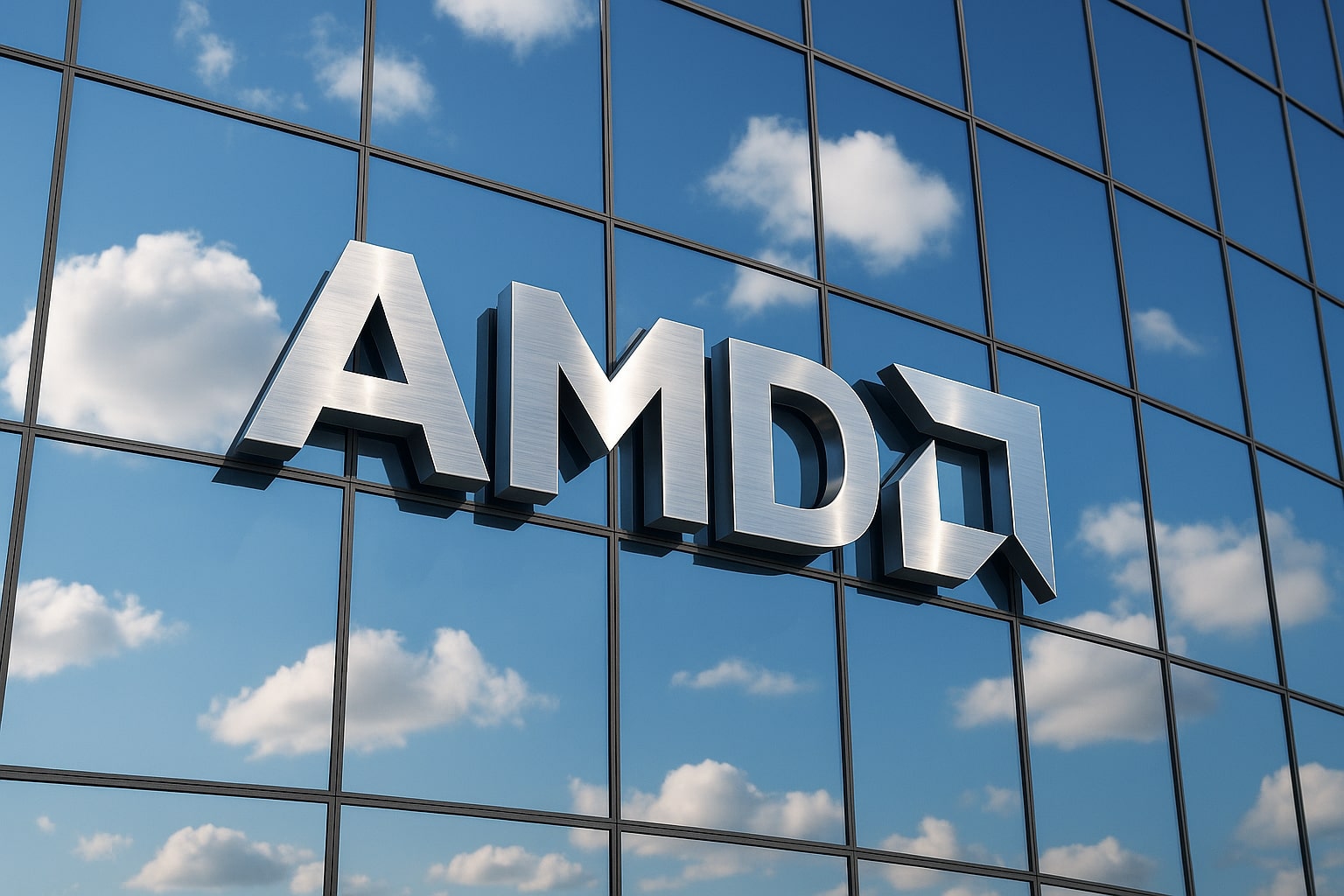NASDAQ:AMD Crushed by 58%, But Oracle’s $2B AI Order Signals Game-Changing Upside
Massive Selloff Brings NASDAQ:AMD to a Critical Inflection Point
At just $89.45 per share, Advanced Micro Devices (NASDAQ:AMD) trades 58% below its all-time high of $160—a collapse many interpret as a warning sign. But the reality is this drawdown has far more to do with macroeconomic overreactions and geopolitical shocks than any structural decline in AMD’s fundamentals. AMD is not broken—it’s underpriced. And beneath the panic lies a resilient growth story driven by explosive AI adoption, staggering data center gains, and major enterprise demand.
Investors are reacting to AMD’s disclosure of a possible $800 million charge stemming from new U.S. export restrictions on advanced AI GPUs, including its MI308 series, to China and associated territories. The U.S. Department of Commerce has tightened regulations, requiring a license for any shipments of these chips to Chinese buyers. But the charge, while headline-grabbing, is manageable. It equates to just 2.5% of projected 2025 revenue—which analysts peg at $31.7 billion—and most importantly, the chips impacted may not be dead stock; they may simply be delayed or redirected.
China Risks Are Real, But Already Priced In
China represents a large slice of AMD’s top-line, with $6.2 billion in annual revenue, accounting for 24% of total sales, as per its latest 10-K. However, AMD’s reliance on Chinese exports has not crippled its momentum in other markets. In fact, the geographic diversity of its enterprise customers is precisely what gives AMD durability in the face of such disruption.
When Nvidia (NASDAQ:NVDA) announced its own $5.5 billion inventory charge—more than 6x AMD’s number—markets absorbed it with similar jitters. But here’s the difference: Nvidia earns only 13% of its revenue from China. AMD’s higher China exposure creates vulnerability—but it also creates rebound potential if trade negotiations shift, licenses are approved, or demand is redirected through alternative channels. Importantly, AMD’s chips are manufactured by TSMC in Taiwan, which could keep them tariff-exempt under Chinese import rules.
AMD’s announcement doesn’t mean those MI308 GPUs will be scrapped. They can be resold, retooled, or rerouted. If licenses are granted or export pathways adjusted, the company could avoid the full write-down. And even if AMD absorbs the hit in full, the $2+ billion order from Oracle for its new MI355x AI chips already covers that loss—and more.
Data Center Growth Explodes: Over 69% YoY Revenue Surge
While attention centers on geopolitical headlines, AMD's core business is accelerating. In Q4 2024, AMD generated $7.6 billion in revenue, a 24.2% YoY increase, exceeding consensus expectations. EPS came in at $1.09, slightly above forecast. But the real story is the Data Center segment, which accounted for more than 50% of total sales and delivered a 69% YoY jump—a blistering pace unmatched by most peers.
The firm’s EPYC server CPUs and Instinct AI accelerators are now foundational pieces of global cloud infrastructure. AMD’s server revenue share now stands at 35.5%, up 3.7 points YoY and 1.6 points sequentially, according to Mercury Research. Server unit share also climbed 2.0 points YoY and 0.9 QoQ. These are not just gains—they're signals of a competitive shift in enterprise infrastructure.
Cloud hyperscalers—including AWS, Google Cloud, Microsoft Azure, and Tencent—are rapidly expanding AMD-powered instances. Over 100 new AMD cloud products were launched in just one quarter. This is not a test phase. It’s real-world deployment at cloud scale.
AI Revenue Surges Past $5B, With Enterprise Deals Gaining Velocity
In 2024, AMD recorded more than $5 billion in revenue from AI-specific products. That figure is set to expand dramatically. AMD’s MI300X accelerator is now embedded in Meta’s Llama 405B and Microsoft’s GPT-4 Copilot. This is not speculation—these are two of the most advanced AI platforms in production today, relying on AMD silicon.
And AMD isn’t stopping there. The upcoming MI350 series, now scheduled for mid-2025 launch due to overwhelming demand, is being fast-tracked to compete directly with Nvidia’s Blackwell architecture. AMD is not reacting—it’s racing forward.
Meanwhile, the MI355x GPUs have already secured a $2 billion+ order from Oracle, announced during the latest earnings call. The scope of the Oracle deal—30,000 GPUs—is one of the largest enterprise orders AMD has ever landed. This single contract dwarfs the $800 million China charge and confirms that global AI demand is not only intact, but accelerating.
Next-Gen Roadmap Adds More Firepower: MI400 and ZT Systems Deal
AMD’s strategy isn’t limited to chip production—it’s moving into vertical integration. The acquisition of ZT Systems, a specialist in rack-level data center design, enables AMD to offer full-stack AI infrastructure. This is a strategic evolution. AMD can now deliver not only the chips, but the entire architecture that houses and powers them.
This will be especially important as AMD rolls out its MI400 series in 2026, designed for large-model training and enterprise-grade inference. By controlling more of the stack, AMD can increase margins, accelerate deployment, and attract larger deals with hyperscalers.
Insider Transactions Reflect Deep Internal Confidence
Despite a 58% stock price collapse, AMD’s executive team hasn’t hit the eject button. According to its insider transaction reports, key insiders like CTO Mark Papermaster and CFO Devinder Kumar have held or increased their positions. There have been no large-scale executive sales, signaling strong internal conviction that this price decline is temporary—and that the long-term outlook remains intact.
In fact, this type of price action—combined with steady insider holding—often marks long-term bottoms, not breakdowns.
Valuation: Pricing in Doom While Ignoring Reality
AMD’s valuation today is hard to ignore. Trading at just 14.3x FY2026 earnings and 19.1x FY2025 EPS, the stock is near its lowest forward P/E since 2018. These numbers imply near-zero growth, which is completely at odds with AMD’s actual performance and forecast.
Even in a bearish scenario where AMD's earnings take a 10% hit, the stock should still trade at $110.88 using a conservative 20x multiple. That’s 25.6% above the current price. Under a more normalized assumption, with 25x earnings on current EPS consensus, AMD’s fair value jumps to $154—a staggering 74.4% upside from $89.
Analysts forecast AMD to generate $7.62 in EPS on $40 billion in sales in FY2026. That’s based on a 20% market share in the AI GPU sector. If AMD continues ramping its AI accelerator business with MI350 and MI355x, that share could expand, pushing sales to $50–60 billion and EPS into double digits.
Meanwhile, Nvidia trades at 23x forward earnings, and Intel sits at 40x, despite far lower profitability and growth prospects. AMD remains the most fundamentally attractive name in the space on a PEG basis.
Q1 Weakness Is Seasonal, Not Structural
Critics point to AMD’s Q1 2025 guidance of $7.1 billion, a 7% sequential decline from Q4. But that dip reflects standard seasonal patterns—not demand destruction. The YoY comparison still shows 30% growth, and gross margins are expected to remain stable at ~54%.
Management reaffirmed its outlook for double-digit revenue and EPS growth for the full year. That’s critical. Most of the export hit has been front-loaded into expectations. The current stock price already reflects those negatives.
Street Price Target Suggests Massive Rebound
Despite recent analyst cuts, the average Wall Street price target for AMD remains $142, implying more than 60% upside from current levels. If MI350 and MI355 ramp ahead of schedule, or if export licensing is resolved, AMD could easily exceed this target by year-end.
The market is underestimating the Oracle order, underpricing Meta and Microsoft’s commitment, and completely ignoring the structural shift in data center demand AMD is capturing.
Final Rating: Strong Buy at $89.45 – This Is a Gift
With a stock price of $89.45, AMD is trading like a dying consumer tech company—not a leader in the hottest vertical of enterprise technology. The AI revolution is not slowing down. AMD is not speculative—it’s deeply embedded in production-level AI infrastructure for the world’s largest platforms.
Between its $2 billion Oracle deal, $5B+ AI revenue run rate, 69% Data Center growth, 25%+ EPS CAGR, and next-gen MI350/MI400 roadmap, AMD is positioned to leapfrog most competitors in 2025–2026.
The $800 million China charge is a short-term bruise. But the company has the contracts, the technology, and the balance sheet strength to grow through it. Add in insider confidence, rock-bottom valuation, and a total lack of selling pressure from executives—and this isn't just a buy.
It’s a Strong Buy. An absolute gift at under $90.



















